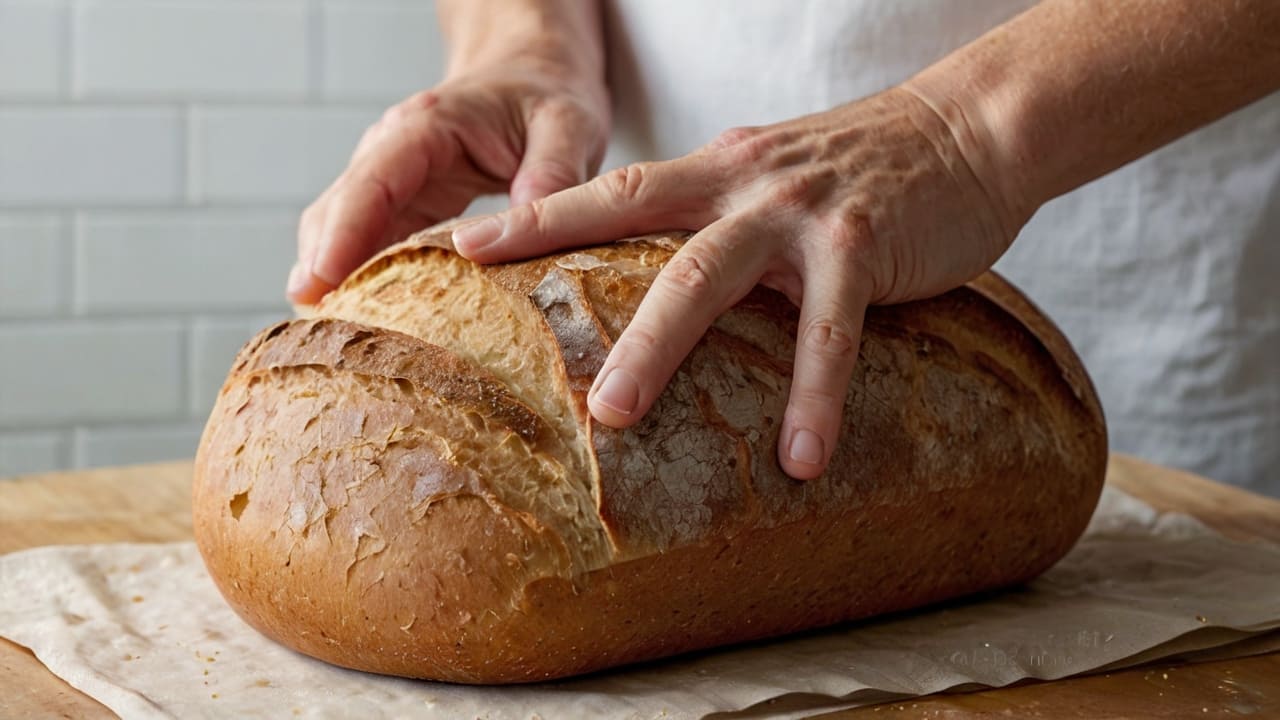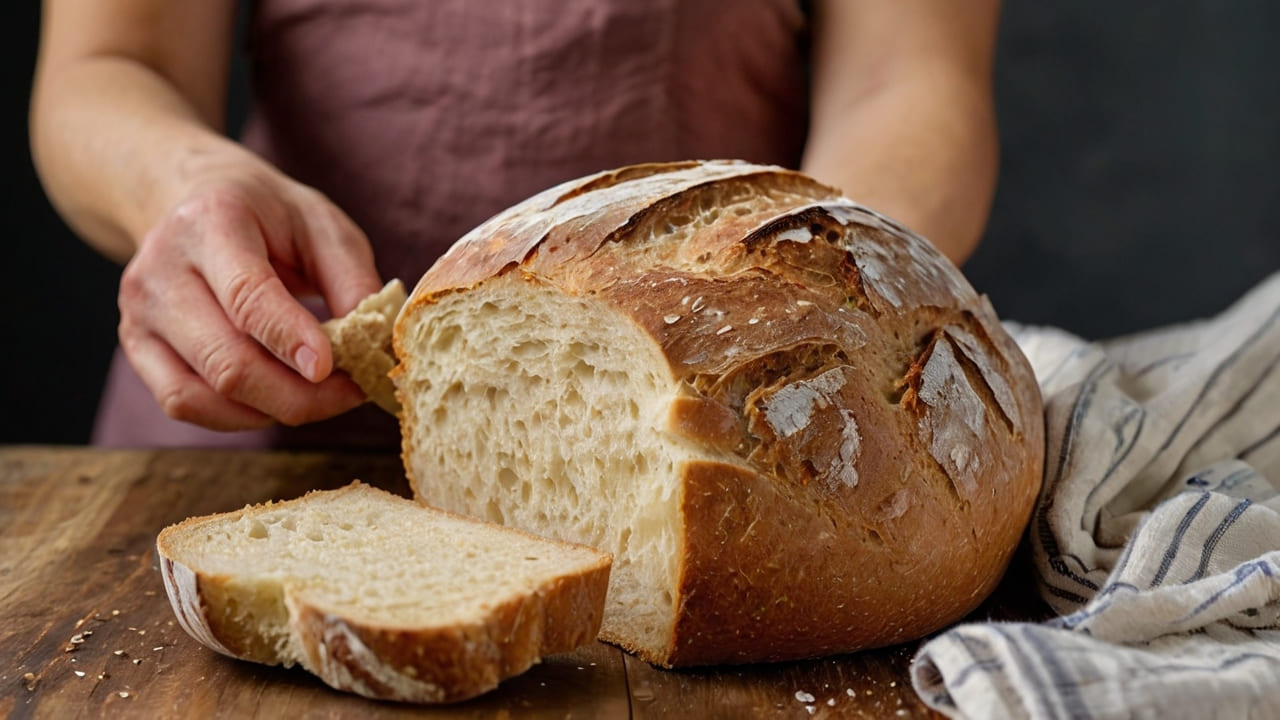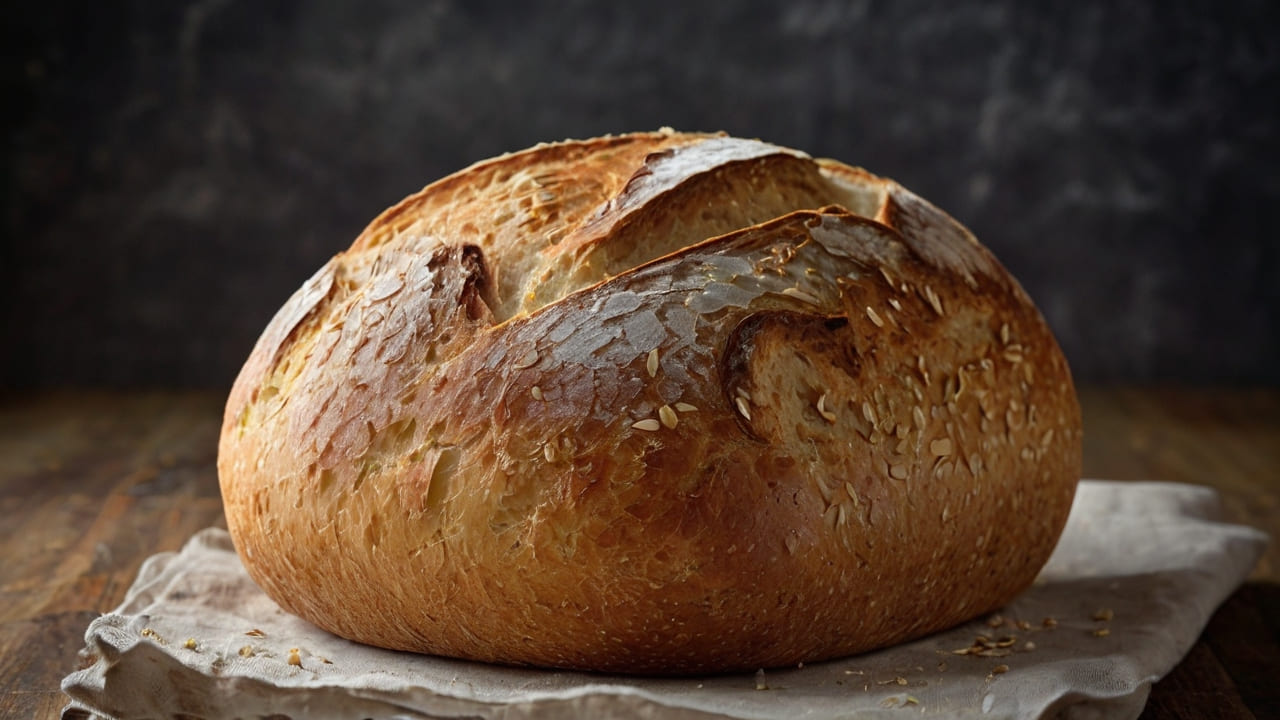
Why Is My Homemade Bread So Heavy? Top Reasons and Fixes
Common Reasons Why Your Homemade Bread is Dense and Heavy

If you’ve been baking bread at home and ended up with a dense, heavy loaf, you’re not alone. There are several factors that could contribute to this, and understanding these reasons is the first step toward lighter, fluffier bread. Let’s explore the most common causes behind heavy homemade bread and how you can avoid them.
Inadequate Kneading and Its Impact on Bread Texture
Kneading plays a crucial role in the bread-making process. When you knead the dough, you’re not just mixing ingredients; you’re developing gluten, the protein network that gives bread its structure. Without sufficient kneading, this gluten network doesn't form properly, leading to dense, heavy bread.
The key is to knead until the dough becomes smooth and elastic. If your dough tears easily or feels loose, it’s likely under-kneaded. To prevent this, knead by hand or use a stand mixer, making sure to check the dough’s consistency frequently. A well-kneaded dough will bounce back when poked and will stretch without tearing.
Yeast Activation and How It Affects Bread Density
Yeast is the magical ingredient that makes bread rise, giving it that light, airy texture. However, if your yeast isn’t activated properly, your bread may end up heavy and dense. Yeast needs warmth to activate—water that's too cold won’t activate the yeast, while water that's too hot can kill it.
To ensure your yeast is properly activated, use water that's about 105°F to 110°F. Stir the yeast into the water with a bit of sugar and wait for it to become frothy. If it doesn’t, the yeast might be old or dead, and it’s best to start over with fresh yeast. This simple step can make all the difference between a light loaf and a brick-like one.
The Role of Gluten in Bread Structure
Gluten is what gives bread its structure, allowing it to rise and hold its shape. When flour and water mix, gluten strands form, creating an elastic network that traps gas bubbles produced by the yeast. If your bread is heavy, it could be due to poor gluten development.
Using the right type of flour is critical here. Bread flour, which has a higher protein content, produces more gluten than all-purpose flour, making it the best choice for bread. If you’re using low-protein flour, consider adding a tablespoon of vital wheat gluten per cup of flour to improve the bread’s texture.
How to Fix Dense Homemade Bread

Understanding the reasons behind dense bread is the first step, but what can you do to fix it? Here, we’ll explore actionable solutions to help you achieve a lighter loaf in your future bakes.
Techniques to Improve Dough Hydration
One of the simplest ways to improve the texture of your bread is by adjusting the dough’s hydration. Hydration refers to the amount of water in your dough relative to the amount of flour. A dough that’s too dry will be tough and dense, while a dough that’s too wet may not hold its shape well.
For a standard loaf, a hydration level of 60-65% is ideal. This means for every 100 grams of flour, you should use 60-65 grams of water. Higher hydration can result in a softer crumb and a more open structure, but it requires careful handling. If your dough is too sticky, try lightly oiling your hands and the kneading surface instead of adding more flour.
Proper Proofing: Why Timing and Environment Matter
Proofing, or letting the dough rise, is a critical step in bread making. During proofing, the yeast ferments the dough, producing gas bubbles that make the bread rise. If your bread is heavy, it could be due to insufficient proofing time or poor proofing conditions.
Proof your dough in a warm, draft-free place. The ideal temperature for proofing is between 75°F and 80°F. If it’s too cold, the yeast activity slows down, resulting in dense bread. If it’s too hot, the dough may overproof, which can also lead to a heavy texture. Keep an eye on your dough—when it has doubled in size, it’s ready for the next step.
Adjusting Baking Temperature and Time for Better Results
Baking temperature and time play a significant role in the final texture of your bread. If the oven temperature is too low, the bread won’t rise as much as it should, leading to a dense loaf. On the other hand, if the temperature is too high, the crust may harden too quickly, trapping the dense interior.
Preheat your oven to the recommended temperature for your recipe, usually around 375°F to 425°F for most bread. Place your dough in the oven only when it’s fully preheated. Consider using an oven thermometer to ensure accuracy, as many home ovens can be off by several degrees.
Preventing Heavy Bread in Future Bakes

Now that you know how to fix dense bread, let’s focus on preventing it from happening again. By fine-tuning your bread-making process, you can consistently produce light, fluffy loaves.
The Importance of Accurate Measurements and Ingredient Quality
Accuracy is key when it comes to baking. Too much or too little of any ingredient can throw off the entire process, leading to heavy bread. Use a kitchen scale to measure ingredients by weight rather than volume for the best results.
High-quality ingredients also make a big difference. Use fresh yeast, bread flour with a high protein content, and filtered water if your tap water has high mineral content. These small details can greatly impact the final product.
Step-by-Step Guide to Proper Kneading Techniques
Proper kneading is essential for gluten development, but it’s easy to get it wrong if you’re not familiar with the process. Here’s a simple guide to ensure you’re doing it right:
- Mix your dough until all the ingredients are just combined.
- Turn the dough out onto a lightly floured surface.
- Push the dough away from you with the heel of your hand.
- Fold the dough back toward you and give it a quarter turn.
- Repeat the process for about 10-15 minutes until the dough is smooth and elastic.
Remember, a well-kneaded dough should stretch without tearing, and a small piece of dough should be able to be stretched into a thin, translucent membrane (known as the "windowpane test"). If it breaks before reaching this stage, continue kneading.
Understanding the Science of Gluten Development
To make the best bread, it’s important to understand the science behind gluten development. Gluten forms when water is mixed with wheat flour, creating a network of proteins that trap gas bubbles during fermentation. This network is what allows the dough to rise and gives the bread its chewy texture.
If your bread is dense, it could be because the gluten hasn’t developed enough. This can happen if the dough wasn’t kneaded enough, if it was overworked, or if the flour used didn’t have enough protein. By choosing the right flour and kneading correctly, you can ensure that your bread will have the perfect structure.
Frequently Asked Questions About Dense Homemade Bread
Even with the best techniques, you might still have questions. Here are some common inquiries related to dense homemade bread and how to address them.
Can Overproofing Cause Bread to Be Dense?
Yes, overproofing can indeed cause bread to become dense. When dough is overproofed, the gluten structure weakens, and the dough can collapse, resulting in a dense, gummy crumb. To avoid overproofing, keep a close eye on your dough during the final rise. If you’re unsure, use the poke test—gently press your finger into the dough. If the indentation springs back slowly, it’s ready to bake.
What Role Does Flour Type Play in Bread Density?
Flour type plays a significant role in the density of your bread. Bread flour has a higher protein content compared to all-purpose flour, which means more gluten development and a chewier, less dense texture. If you’re aiming for a light, airy loaf, always opt for bread flour. If you must use all-purpose flour, consider adding a tablespoon of vital wheat gluten per cup of flour to increase the protein content.
How Can I Salvage Dense Bread After Baking?
If you’ve already baked a dense loaf, don’t throw it out just yet. There are still ways to salvage it. Dense bread can be repurposed into croutons, bread pudding, or even breadcrumbs. You can also slice it thinly, toast it, and use it for bruschetta or garlic bread. While it may not be the light loaf you were aiming for, these uses ensure it doesn’t go to waste.
Remember, baking bread is as much an art as it is a science. With practice and the right techniques, you’ll be able to consistently bake light, fluffy loaves. If you ever feel stuck, just revisit these tips, and don’t forget to check out resources like Bestbreadmaker.store for more expert advice. Whether you’re a seasoned baker or just starting, these guidelines will help you perfect your homemade bread.
Ms. Janna, a seasoned baker with over 20 years of experience, always emphasizes that patience and precision are key in bread making. Peter Reinhart, an acclaimed bread expert and author of The Bread Baker's Apprentice, also highlights the importance of understanding the fermentation process to avoid common pitfalls like dense bread. By following these steps and understanding the science behind each stage, you'll be well on your way to baking the perfect loaf every time.


